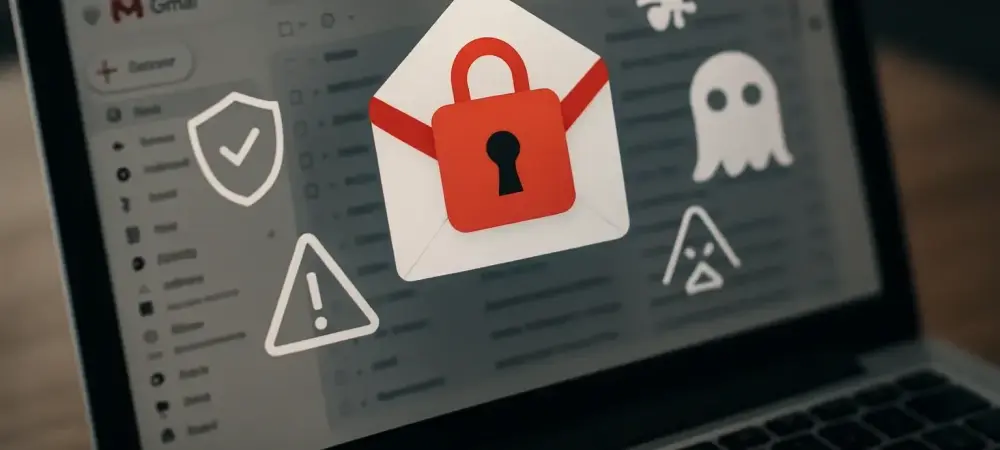I’m thrilled to sit down with Dominic Jainy, a seasoned IT professional whose deep expertise in artificial intelligence, machine learning, and blockchain brings a unique perspective to the ever-evolving world of cybersecurity. With a passion for exploring how emerging technologies impact various industries, Dominic is the perfect person to help us navigate the recent wave of security threats targeting Gmail users. Today, we’ll dive into the sophisticated scams affecting millions, the hybrid attack methods being used, Google’s response to these challenges, and actionable steps users can take to protect themselves. Let’s get started.
How would you describe the current landscape of security threats targeting Gmail users, and what makes them particularly vulnerable?
The threat landscape for Gmail users right now is incredibly dynamic and dangerous. With over 2.5 billion users worldwide, Gmail is a goldmine for cybercriminals. Hackers are deploying a range of attacks, from phishing emails to more complex hybrid scams that combine phone calls and emails. What makes Gmail users especially vulnerable is the sheer volume of personal and sensitive data stored in their accounts—think passwords, financial details, and personal correspondence. It’s a one-stop shop for identity theft or further attacks. Plus, the trust people place in a brand like Google can be exploited by attackers impersonating official support, making these scams even more effective.
Can you walk us through the hybrid attack method that’s been making waves recently, and how it manipulates users?
Absolutely. This hybrid attack is particularly insidious because it plays on both urgency and trust. It starts with a phone call from someone claiming to be from Google support, warning the user that their account is under attack and needs an immediate password reset to secure it. Then, an email arrives—seemingly from Google—with a verification code for the reset. The attacker, still on the phone, convinces the victim to read out this code to “help secure the account.” In reality, they’re using that code to take over the account in real time. It’s a clever blend of social engineering and technical deception that catches even savvy users off guard.
What insights can you share about how Google has responded to this surge in password-stealing threats?
Google has been quite vocal about the rising threats, noting an 84% increase in password-stealing email attacks last year, with the trend only intensifying into 2025. They’ve made it clear that they will never call users to reset passwords or troubleshoot account issues, which is a critical message for users to remember. Beyond statements, Google has rolled out resources like guides to identify genuine security alerts and tools such as the Security Checkup and Advanced Protection Program to help users fortify their accounts. They’re also pushing innovations like passkeys, which offer a stronger defense than traditional two-factor authentication.
What practical steps can Gmail users take to safeguard their accounts against these sophisticated scams?
First and foremost, users should run the Google Security Checkup. It’s a straightforward tool that scans your account settings, flags vulnerabilities, and guides you on fixing them—like enabling two-factor authentication or revoking access to risky apps. Another step is enrolling in the Advanced Protection Program, which adds layers of security by restricting app access and tightening account recovery processes. Lastly, adopting passkeys is a game-changer. Unlike SMS codes or app-based authentication, passkeys are far more resistant to phishing and automated attacks. Beyond tools, staying skeptical of unsolicited calls or emails claiming to be from Google is crucial.
How do you see the prevalence of these Gmail scams evolving, and are there broader trends in cybercrime we should be aware of?
These scams are not only common but growing at an alarming rate, as evidenced by Google’s report of an 84% spike in email-based password theft attempts. Looking into 2025, I expect attackers to refine their social engineering tactics, leveraging AI to craft more personalized and convincing messages or calls. We’re also seeing a trend where attackers target multiple platforms simultaneously—Gmail might be the entry point, but the goal could be accessing linked accounts on other services. Compared to other email platforms, Gmail’s massive user base makes it a prime target, though no platform is immune. The key trend is hybridization—combining old-school tactics like phone calls with digital methods to bypass user suspicion.
What advice would you offer to someone who suspects they’ve fallen victim to one of these Gmail scams?
If you think you’ve been compromised, act fast. First, try to regain control of your account by using Google’s account recovery process—go to the login page and follow the steps to reset your password using any backup methods you’ve set up, like a recovery email or phone number. Immediately after, enable two-factor authentication if it’s not already on, and run the Security Checkup to see if anything else looks off. Change passwords for any linked accounts too, since those could be next. Report the incident to Google through their support channels, and consider monitoring your financial accounts for unusual activity. Finally, don’t beat yourself up—scammers are getting incredibly sophisticated, and it’s a learning moment for staying vigilant.
What is your forecast for the future of email security threats, particularly for platforms like Gmail?
I believe email security threats will continue to escalate in both frequency and complexity over the next few years. For platforms like Gmail, the challenge will be balancing user convenience with robust security. We’ll likely see more AI-driven attacks that mimic legitimate communications with uncanny accuracy, making it harder for users to spot fakes. On the flip side, I expect Google and similar providers to double down on technologies like passkeys and machine learning to detect and block threats before they reach users. The arms race between attackers and defenders will intensify, and user education will remain a critical piece of the puzzle. I’m cautiously optimistic, but it’s going to be a bumpy ride.

